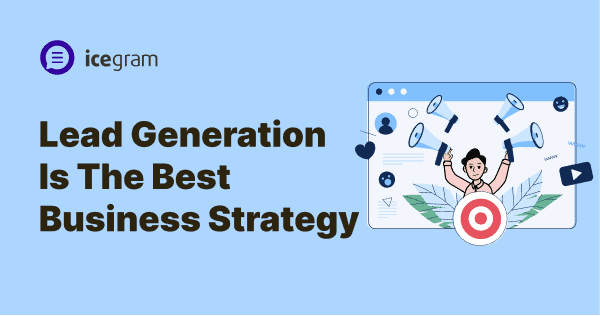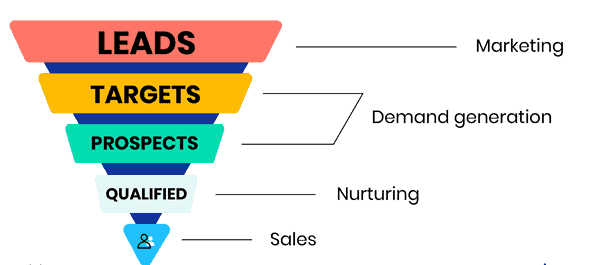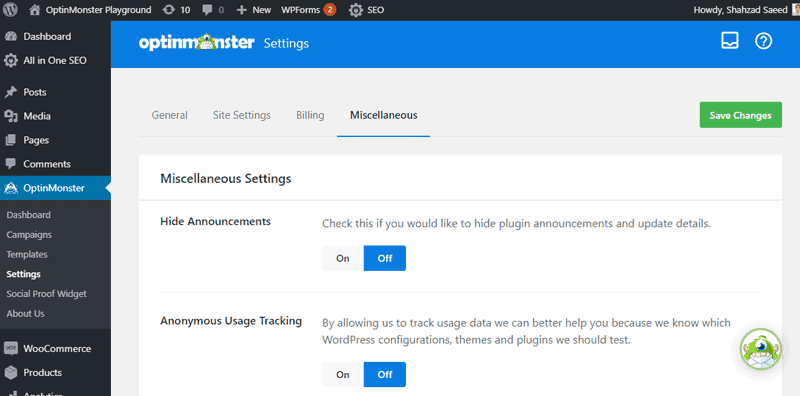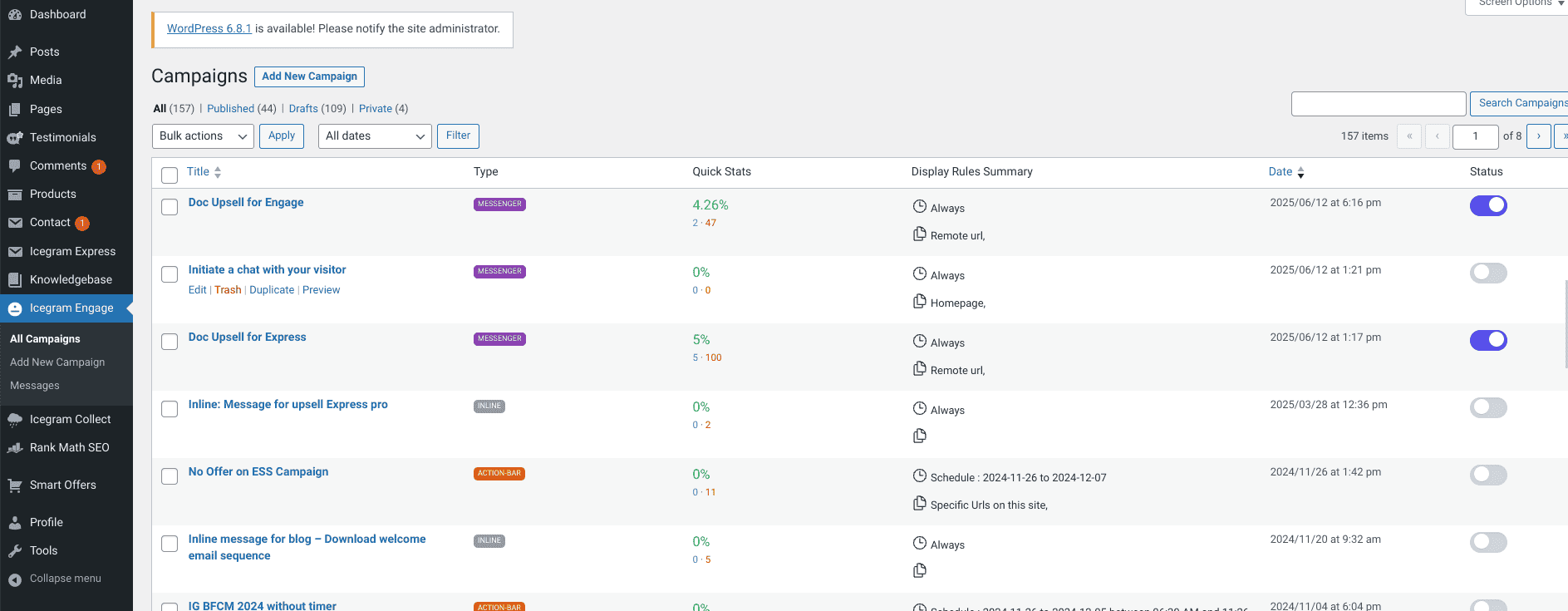In the past decade, businesses have had to adjust to a constantly changing landscape of digital technology and marketing. As it stands, creating a successful and sustainable business strategy has become more complex than ever.
Lead Generation is the process of identifying potential customers and gathering contact information such as email addresses, phone numbers, etc.
This allows you to create targeted campaigns for your specific audience. The benefits are tremendous; it not only drives sales but also builds relationships with customers who can be nurtured into loyal fans. In this blog post, we will explore why lead generation is the best business strategy in 2024 and how to make it work for you.
Why is lead generation important for brands?
As a crucial aspect of business, lead generation aims to pique the interest of potential customers in your product or service. This is accomplished through various methods, all of which share a common goal.
Here are some key reasons why lead generation is essential for businesses:
- If you’re not actively generating leads, you’re not growing your customer base. And without a steady stream of new customers, your business will eventually stagnate.
- The process of generating leads gives you an opportunity to build rapport and establish trust with potential customers before they’ve even made a purchase from you.
- If they have a positive experience during the lead generation process, they’re more likely to do business with you down the line.
When it comes to business, leads are everything. After all, a business is only as good as the leads it generates.
Benefits of effective lead generation
It is important to understand the benefits of lead generation before making any decisions. While the results may vary depending on your industry and the specific channels you explore, there are many benefits you can expect to experience. Some of the benefits you will see include the following:
Increased brand awareness
An awareness of your brand can be measured by how well it’s known. When a company uses social selling to build brand awareness, ROI increases by 199%, and almost 70% of buyers’ journeys are completed before they make a purchase.
- Higher brand impressions result in increased trust and referrals, leading to greater marketing success.
- Lead generation educates your audience about your products and services.
- Analyzing repeat visitors and average session time can show the gradual development of brand value.
- Use press coverage, social proof, testimonials, and customer reviews to increase brand awareness and grab leads’ attention.
Brand loyalty
When it comes to building brand loyalty, customer experience is key. By providing a positive experience, you increase the chances of retaining customers and creating repeat business.
- Building and maintaining relationships with consumers is essential for brand loyalty.
- Relevant consumer experiences can keep people coming back to your brand and build consumer retention.
- Brand loyalty reduces customer acquisition costs and increases sales.
- Focusing on loyal customers improves marketing ROI and nurtures brand engagement.
- Loyal customers are worth 10 times more than the value of their first purchase, and increasing customer loyalty by just 5% can lead to profit gains of 25% to 100%.
Target the right customers
You need to conduct research and figure out who your target audience is so you can craft content that speaks directly to them. By connecting with your ideal customers and providing them with valuable solutions, you can generate leads and drive business growth.
- By generating leads, you can target desired customers and gather essential information about prospects, as quality matters more than quantity.
- To automate the targeted lead generation process and expand the lead database, many companies invest in lead generation plugins like Icegram engage, OptinMonster, etc.
- Having segmented your data lists, planning outreach becomes easier.
- Focusing on building relationships after qualifying and filling your pipeline with targeted leads can work wonders for your business.
Get valuable data
When it comes to marketing, using data about your potential customers can be a game-changer. By crafting targeted campaigns, you’re more likely to connect with your audience, leading to conversions that can help close deals and increase sales.
- By analyzing customer behaviour and preferences, businesses can create effective marketing strategies.
- Using data to personalize marketing messages can lead to higher conversion rates and customer satisfaction.
- Lead generation tools can automate the process of gathering and analyzing customer data, making it easier for businesses to make informed decisions.
So, don’t underestimate the power of data in growing your business!
Grow revenue
It can be an extremely cost-effective way to grow your business. Through lead generation, you can provide consumers with interesting content, which will make them want to buy your products or services.
- By providing potential customers with interesting and relevant content, businesses can build trust and credibility, leading to increased sales.
- Targeted marketing campaigns based on customer data can lead to higher conversion rates and increased revenue. Understanding the interplay between demand generation vs lead generation is crucial for maximizing your business growth potential.
If you’re not already using lead generation as your primary business strategy, now is the time to start. It’s a proven method for growing your business and should be a key part of your overall marketing plan.
What are the types of lead generation?
There are a variety of ways to approach it, including organic search engine optimization (SEO) to get found on Google, paid social media advertising or boosted posts, organic social media posts, inbound marketing, and more.
The options can be overwhelming, but as a small business owner, you probably want to. However, you probably want to know where to start quickly and easily.
Two main types of lead generation are inbound and outbound lead generation:
Inbound lead generation
Everyone knows that inbound marketing is a strategy that focuses on drawing people in by creating content that’s relevant and valuable to them. Here’s why inbound lead generation should be a top business strategy for you:
- An inbound lead generation is a cost-effective approach because you only pay for the resources you use, such as website hosting and email marketing.
- Inbound lead generation results in more loyal customers who are more likely to do business with you because they trust your brand.
So how do you do it? Well…
- The first step is to understand your target audience and what kind of content they’re looking for.
- Your next step is to create and share content that will attract, engage, and delight them, such as blogs, videos, podcasts, and social media posts.
- By providing helpful information and solving problems for your target audience, you create a positive association with your brand.
Over time, as people start to discover and engage with your content, they’ll become more familiar with your brand and more likely to do business with you.
Outbound lead generation
Now outbound lead generation is a different approach compared to inbound. Just like its name, you have to initiate contact with people to generate interest in your product or service.
- An outbound lead is created when your marketing message disrupts a potential lead’s daily content consumption.
- The right balance must be struck between generating interest and respecting people’s time and attention when it comes to outbound marketing.
Here are a few things to remember when it comes to outbound lead generation:
- Outbound lead generation can be effective, but it needs a solid plan.
- Define your target market and their needs and pain points.
- Choose the right channels to reach your target market, which can include online advertising, email marketing, cold calling, and networking events.
- Pick the channels that work best for your business and budget.
Both inbound and outbound lead generation methods can be effective, depending on the business’s goals and the target audience. It’s important to consider the pros and cons of each approach and develop a strategy that makes sense for your business.
Lead generation process
In marketing, you attract and convert strangers to customers or leads for your business, and turn that interest into sales or customers. It is only the first step towards converting potential customers into loyal clients that leads are generated. Its process isn’t a one-step solution to all your problems.
Each stage requires specific steps to properly qualify and nurture leads through the sales funnel. Don’t worry – we’ve got you covered. We’ll walk you through some of the key steps you need to follow in order to ensure that you both generate leads and use them effectively.
Building an email list
Email list building remains a top and most effective marketing strategy in 2024. An engaged email list is a valuable asset for any business because it is part of owned media. However, building an effective email list requires patience and a solid strategy.
Let’s say you run a small business selling handmade jewellery. You’ve set up a website and social media accounts, but you’re struggling to attract visitors and build a customer base. This is where email list building comes in.
Let me tell you something that may be of interest to those thinking about using these methods. According to Oberlo Email Marketing statistics, for every $1 spent on email marketing, an average expected return is $40.
So by building an engaged email list, you’ll have a valuable asset for your business that you can use to promote new products, offer discounts, and stay in touch with your customers.
Social media marketing
If you’re looking to generate more leads, Social media marketing is another important process to consider. Social media platforms like Facebook, Instagram, and LinkedIn can be great tools to help you do just that. Here are some tips to get you started:
- Know your customers well and share your gated content on social media to increase your reach and gather more audience engagement.
- Run contests, giveaways, and promotions to incentivize your audience to give out lead information. While these may not always give you the most qualified leads, they can be a cost-effective way to expand your audience base.
- Use “Lead Generation Ads” on social media platforms to directly collect leads through pop-up lead generation forms in your ads.
- Utilize live videos and stories to promote your gated content, such as registration for an event or special e-book or template.
By leveraging these tactics on social media, you can increase your reach and engagement with potential leads, ultimately helping you grow your business.
Content marketing
Content marketing is a must-have for any good marketing strategy, but how do you turn that traffic into qualified leads? It’s simple – channel it to other kinds of content. Your non-gated blogs are just the beginning.
You can also offer e-books, courses, infographics, checklists and more in exchange for lead information. To attract leads,
- Your content must be SEO optimized and engaging.
- It should be informative enough to make users want to give you their lead information.
- Publish content in the form of blog posts, social media, photos, infographics, flow charts, or eBooks.
- Engaging, helpful, and shareable content offers your customers solutions to their concerns.
Public relations
Public Relations, or PR, is all about creating positive connections with people and organizations, building brand awareness, and maintaining a good reputation. It’s a powerful tool for generating leads and boosting sales, as it generates buzz and gets people talking about your brand.
The ultimate goal of PR is to spread your message to your target audience and establish you as an industry leader.
So if you’re looking to boost your inbound lead generation, don’t overlook the power of PR.
Lead generation best practices
There are a number of lead generation best practices that can help you to generate more leads for your business. In addition to the above tips, it is important to also focus on building relationships with your existing customers.
Happy customers are more likely to refer their friends and family to your business, which can lead to even more leads and sales.
Another effective strategy is to offer something of value in exchange for contact information. This could be a free ebook, webinar, or consultation. By offering something that your target audience finds valuable, you can increase the likelihood that they will provide their contact information, allowing you to follow up with them and convert them into customers.
Here are a few practices that you can follow to generate more leads for your business:
Consider the end goal first
- Keep your end goal in mind for lead generation.
- Determine what you want to achieve through lead generation.
- Choose a lead generation strategy that aligns with your end goal.
- Consider seeking help from a lead generation expert to create a customized strategy.
Define your target audience
- To create effective content, first, understand your audience.
- Create buyer personas to get a detailed picture of your target audience.
- Identify their pain points and the type of content they are looking for.
- With this understanding, start creating content that resonates with your audience.
Create great content that draws visitors
- Use different types of content such as blog posts, infographics, and eBooks.
- Promote your content through social media and email marketing.
- The goal is to generate leads by getting as many people as possible to see your content.
- Quality content is still the most effective way to generate leads and gain customers.
Promote your brand with contests and affiliates
Collect emails for personalization
- Endless people prefer emails for lead generation, making it the top digital channel with the most reach, as well as a cost-effective way to reach potential customers.
- Email allows you to segment your list and target specific messages to specific groups of people, increasing the chances of action. Once set up, email sending can be automated, freeing up time for other tasks.
- Email marketing platforms provide detailed data on opens and clicks, helping refine your strategy and improve results.
A/B test lead-generating CTAs
- A method of comparing two versions of a web page to see which one performs better.
- It can evaluate web page design and the effectiveness of CTAs by comparing different versions and identifying the most successful one.
- Ensure you have enough traffic for reliable results.
- Test one change at a time to determine which change had the desired effect.
- Be patient and give your tests enough time to run before making any decisions.
What are common lead generation challenges?
In today’s competitive business landscape, tracking, reaching, and engaging with potential clients can be a daunting task. The sheer amount of information available makes it hard to stand out and succeed. But don’t lose hope just yet!
By understanding the challenges of lead generation, you can increase your chances of survival and success. So let’s dive in and take a closer look at what you’re up against.
Over reliance on referrals
- Referrals and word-of-mouth marketing are important, but not enough for successful lead-generation strategies.
- Implement a proper lead generation campaign to increase sales and convert potential leads into customers.
Forming an appropriate lead generation strategy
- Gather relevant information about your customers to share your campaign where they can find you.
- Use interactive content such as quizzes to engage potential customers.
- Use social media sites to introduce customer preference surveys to enhance your product/service.
Collecting enough funds for your lead generation strategy
- Spending a luxurious amount of funds doesn’t guarantee success.
- Target your customers with personalized solutions and a strategy that resonates with them.
Generating good quality and quantity of leads
- Personalize elements of your campaign to engage with customers on an individual level.
- Interactive content such as quizzes can be effective for lead generation.
- Personalization can increase conversion rates and sales.
Tracking ROI for a lead generation campaign
- Track the performance and metrics of your interactive content campaign using an analytics tool like Outgrow’s builder.
- Analyze the leads, visits, and conversion data to identify weak points and improve your campaign.
Nurturing new leads generated
- The lead generation process doesn’t end with acquiring new leads.
- Consistently engage with your customers to keep them coming back for solutions.
- Interactive content can help increase customer satisfaction and loyalty rates.
What tools are used for lead generation?
From online advertising to traditional methods such as print advertising and direct mail, there are a variety of effective ways to collect leads. Pay-per-click advertising, search engine optimization, and social media marketing are also common methods that businesses can use to generate leads and reach their target audience. The key is to find the right combination of tools that work best for your specific business and target audience.
Also to ensure that whatever method is used, is targeted towards the right audience where the next step is to determine which channels will reach them most effectively. From there, the lead generation process can be designed and implemented. We can get an idea of how these tools are helpful by looking at a few listed below:
OptinMonster
OptinMonster is a popular lead generation tool because it allows you to create opt-in forms that convert visitors into leads.
- Its wide range of features makes it easy to customize your forms and target your desired audience.
- It offers detailed analytics and insights into your form performance.
- You can automatically send emails using the platform’s integration with popular email marketing services.
Optin Monster is paid plugin:
- Prices are $108/yr for: Basic version
- $228/yr for: Plus version
- $348/yr for: Pro version
- $588/yr for: Growth version.
Icegram Engage
The best WordPress lead generation plugin and popup is Icegram Engage.
- Icegram Engage is a result-driven tool for building email lists, designed for website owners and bloggers with no coding experience.
- The tool offers customisable templates and themes where you can create beautiful popups, slide-ins, opt-ins, welcome bars, and more, without any coding knowledge.
- Icegram Engage’s intuitive interface and user-friendly features make it easy for anyone to use and have a user base of more than 30k+ individuals worldwide.
Icegram Engage has a free Starter plan and a Pro plan for $129 per year and a Max plan for $229 per year.
Conclusion
So if you want to turn your business garden into a lush oasis of growth and opportunity, then lead generation is the essential fertilizer that you need. With its power to attract, nurture, and grow your customer base, lead generation is the ultimate tool for any business looking to succeed.
Don’t let your competitors steal your sunlight and overshadow your blooms. Take control of your business growth today and invest in the power of lead generation. So why wait?
FAQ
What’s the difference between lead generation and demand generation?
Lead generation focuses on capturing contact information from potential customers, while demand generation builds awareness and interest in your product or service without always requiring immediate contact capture.
Is inbound or outbound lead generation better?
Both have value. Inbound strategies build trust over time through content and SEO, while outbound methods (like cold emails and calls) generate faster results. A hybrid approach often works best.
What KPIs should I track to measure lead generation success?
Key metrics include cost per lead (CPL), conversion rate, lead quality score, sales-qualified leads (SQLs), and return on ad spend (ROAS).
How do privacy laws impact lead generation?
Laws like GDPR, CCPA, and newer data regulations require businesses to obtain consent before collecting personal data. Always use transparent opt-ins and provide unsubscribe options.




